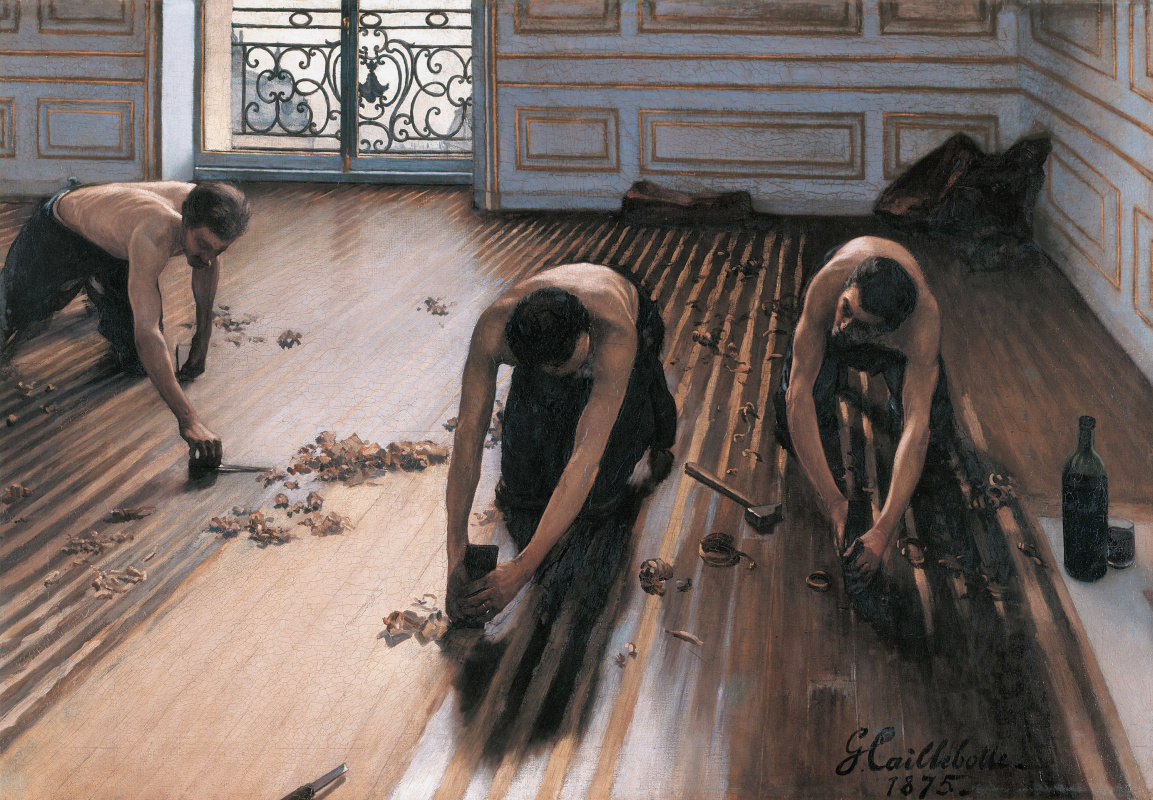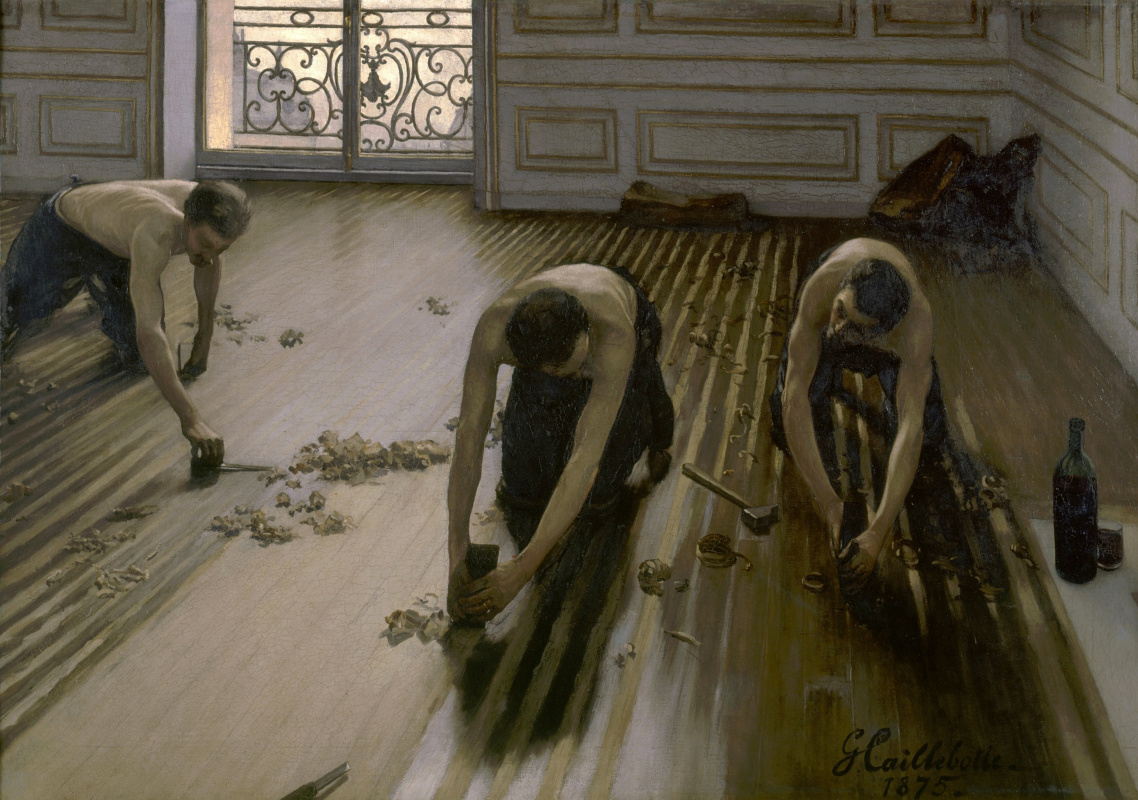log in
Enter site
Login to use Arthive functionality to the maximum
The Floor Strippers
Gustave Caillebotte • Painting, 1875, 102×146 cm
Description of the artwork «The Floor Strippers»
When Caillebotte suggested "Parquet floor" for the annual Paris exhibition at the Salon in 1875, academics her contemptuously rejected: vulgar. When the painting appeared in the second impressionist exhibition, even a friend of artists and innovators Emile Zola who wrote many laudatory articles in support of them, was outraged. Bourgeois art – snorted the writer. His course was embarrassed and delighted almost photographic accuracy and was outraged by this artist's view from the top. Down thought Zola.
Similarly, Caillebotte was incredibly rich – and all the rules and expectations should have been painting huge paintings on historical themes or bright-eyed Venus, surrounded by rosy-cheeked cupids. These paintings would graciously be accepted by the Salon and went straight from there to go in a fashionable Paris. But Kirottu giddy new modern city life, inventions, technical coups, wide boulevards and heavy bridges. Instead of the three graces dancing in the weightless clouds, he writes three workers, suscribase Polish from flooring. Writes with classical academic excellence and precision.
This new elegant building, which features parquet, located on the street Miromesnil. And the floor, which they scratch – the floor of the future Studio of the artist. Waldemar Januszczak British art critic, had the present building investigation, to understand why workers scratching new floor mean and why the first prescribed flat strips on the surface. First, the floor though new, but dark. And in the artist's Studio should be light. Second, the bands do now – not lose and not to remove excess wood. Word to the floor on the entire surface remained smooth.
But the view from the top to Caillebotte's is just a top view. Technique and compositional puzzle. Caillebotte was hunting for such complex viewpoints: wrote paddler sitting with him in the same boat almost pushing his knees into his knees, or watched them from the balcony the passing down of people who have this perspective see only the boots, shoulders and cylinders.
Now Caillebotte has long been accused of not approving of the parquet floor, and in the bourgeois manners, because he is the first artist who made the city work with the character. He went the farthest. Courbet wrote the breaker of stones and millet farmers sifting the grainand planting potatoes. Moved to the city Manet and Renoir, but they wrote dancing belosicand being sad barmaids. And at stations Monet no one works – they all have been debugged and smokes. Caillebotte first noticed that the townspeople work. In his Paris painters paint the facade, and even agricultural works seem somehow modern and innovative experiment (1, 2).
Author: Anna Sidelnikova
Similarly, Caillebotte was incredibly rich – and all the rules and expectations should have been painting huge paintings on historical themes or bright-eyed Venus, surrounded by rosy-cheeked cupids. These paintings would graciously be accepted by the Salon and went straight from there to go in a fashionable Paris. But Kirottu giddy new modern city life, inventions, technical coups, wide boulevards and heavy bridges. Instead of the three graces dancing in the weightless clouds, he writes three workers, suscribase Polish from flooring. Writes with classical academic excellence and precision.
This new elegant building, which features parquet, located on the street Miromesnil. And the floor, which they scratch – the floor of the future Studio of the artist. Waldemar Januszczak British art critic, had the present building investigation, to understand why workers scratching new floor mean and why the first prescribed flat strips on the surface. First, the floor though new, but dark. And in the artist's Studio should be light. Second, the bands do now – not lose and not to remove excess wood. Word to the floor on the entire surface remained smooth.
But the view from the top to Caillebotte's is just a top view. Technique and compositional puzzle. Caillebotte was hunting for such complex viewpoints: wrote paddler sitting with him in the same boat almost pushing his knees into his knees, or watched them from the balcony the passing down of people who have this perspective see only the boots, shoulders and cylinders.
Now Caillebotte has long been accused of not approving of the parquet floor, and in the bourgeois manners, because he is the first artist who made the city work with the character. He went the farthest. Courbet wrote the breaker of stones and millet farmers sifting the grainand planting potatoes. Moved to the city Manet and Renoir, but they wrote dancing belosicand being sad barmaids. And at stations Monet no one works – they all have been debugged and smokes. Caillebotte first noticed that the townspeople work. In his Paris painters paint the facade, and even agricultural works seem somehow modern and innovative experiment (1, 2).
Author: Anna Sidelnikova




